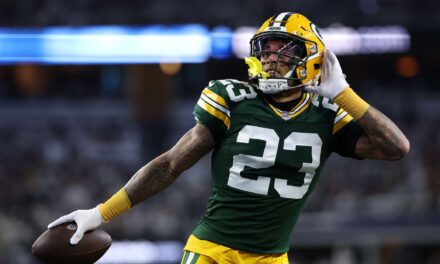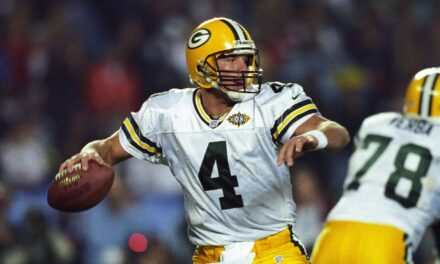Green Bay Packers quarterback Bart Starr went from a 17th round draft pick to being inducted into the Pro Football Hall of Fame. He led the Pack to five NFL championships in seven years between 1961 and 1967 and was the winning quarterback and MVP of the first two Super Bowls.
Starr’s best season came in 1966 when he was named the NFL’s MVP and led the Packers to a 12-2 record and a victory in Super Bowl I.
The legendary Vince Lombardi had high praise for Starr who he considered an extension of himself on the field. He called Starr, “the smartest quarterback I ever saw.” Remember, in that era, most quarterbacks called their own plays so Starr had that responsibility in addition to just passing the ball to open receivers.
When Lombardi found out that Johnny Unitas was named the NFL’s quarterback of the 1960s, he objected to the choice saying, “Johnny Unitas has been a great, great, great quarterback but Starr did the winning in the 1960s. And that is the object – to win.”
Starr echoed his coach’s sentiments during the 1966 season. “Individual statistics are fine if they are by-products of winning but I take no stock in them. If your team finishes second, they mean absolutely nothing.”
By modern standards Starr’s 1966 numbers don’t look that spectacular but the NFL was more of a running league in that era. The Alabama alum completed 62.2 percent of his passes for 2,257 yards and 14 touchdowns while throwing only three interceptions all season. He led the league in completion percentage, yards per attempt and had the lowest interception percentage in the league that year.
Hall of Fame guard Jerry Kramer explained Starr this way, “Bart was rarely the best quarterback in the league on a statistical basis but for three hours each Sunday, he was – almost always – the best quarterback in the game in which he was playing.”
Starr was cool, polite, sometimes soft-spoken but he also had a quiet toughness just beneath the surface. “He doesn’t get rattled, he doesn’t get shook and he calls plays thoughtfully,” halfback Paul Hornung said when asked about Starr in October of 1966. “He follows the game plan to a ‘T’ and he thinks the plays out. We probably wouldn’t have won half the games we did this year without him.”
Opposing coaches also respected what Starr brought to the table. One NFL coach who remained anonymous told the New York Times, “It’s not hard to read the Packers offense. It’s almost a rinky-dink attack, not much imagination, simple meat and potato plays. But it is hard to read Starr. He takes those simple tools and uses them to the hilt. He has all kinds of guts, especially on third down.”
When Starr won the MVP, he was his typical humble self. “I’m proud and grateful but it really should be a team thing,” he told the Green Bay Press Gazette. “It would be better to cut up something like this and pass it around to each member of the team. This is our philosophy. It is not how much it benefits the individual but how much it benefits the team.”
As efficient as Starr was in the regular season in 1966, he was even better in the postseason. He always played his best when the stakes were the highest. In the NFL Championship Game against Tom Landry’s Dallas Cowboys, Starr completed 19-of-28 passes for 304 and four touchdown passes in the Packers 34-27 win at the Cotton Bowl in Dallas. Starr had this spectacular game despite being sacked five times by the Doomsday Defense.
His four touchdowns went to four different receivers, a 17-yard pass to running back Elijah Pitts, a 51-yard bomb to wide receiver Carroll Dale, a 16-yard toss to Boyd Dowler and a 28-yard scoring play to veteran Max McGee. Starr’s quarterback rating for the game was 143.5. He became the second quarterback in NFL history to win four championships joining Hall of Famer Sid Luckman.
Two weeks later in the Super Bowl, Starr completed 16-of-23 passes for 250 yards and two touchdowns against the AFL champion Kansas City Chiefs. Both touchdown passes were to McGee including the first touchdown in Super Bowl history. He was named the game’s MVP for his efforts.
“Starr was simply magnificent,” Chiefs head coach Hank Stram said after the game. He just killed us by getting them out of third-down holes.”
Starr led the NFL in passing three times during his career but his best season was 1966. He was 32-years old and still at the top of his powers. There was no doubt that year that the Packers were the best team in football and Bart Starr was the most valuable player in the league.
Follow Gil Martin on Twitter @GilPackers
Click here for more great Packers coverage



